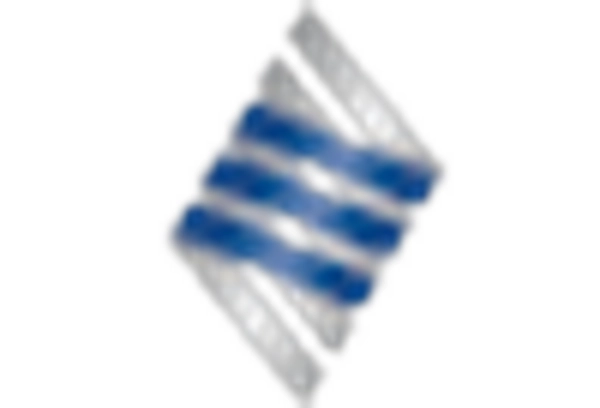Rising Demand for Industrial Automation
The Vibration Monitoring Market is experiencing a notable surge in demand due to the increasing adoption of industrial automation across various sectors. As industries strive for enhanced efficiency and reduced operational costs, the integration of automated systems becomes paramount. This trend is particularly evident in manufacturing, where automated machinery requires constant monitoring to ensure optimal performance. According to recent data, the automation sector is projected to grow at a compound annual growth rate of approximately 9% over the next five years. This growth directly correlates with the need for advanced vibration monitoring solutions, as businesses seek to minimize downtime and extend equipment lifespan. Consequently, the Vibration Monitoring Market is poised to benefit significantly from this shift towards automation, as companies invest in technologies that facilitate real-time monitoring and predictive maintenance.
Increasing Focus on Equipment Reliability
In the Vibration Monitoring Market, there is an escalating emphasis on equipment reliability, driven by the need to maintain operational continuity and reduce maintenance costs. Industries such as oil and gas, manufacturing, and power generation are particularly affected, as equipment failures can lead to substantial financial losses and safety hazards. Recent statistics indicate that unplanned downtime can cost companies up to 20% of their annual revenue. As a result, organizations are increasingly investing in vibration monitoring technologies to detect anomalies early and prevent catastrophic failures. This proactive approach not only enhances equipment reliability but also aligns with broader industry trends towards sustainability and efficiency. The Vibration Monitoring Market is thus likely to see sustained growth as companies prioritize reliability and invest in advanced monitoring solutions to safeguard their operations.
Regulatory Compliance and Safety Standards
The Vibration Monitoring Market is also driven by stringent regulatory compliance and safety standards that mandate regular monitoring of equipment vibrations. Industries such as aerospace, automotive, and energy are subject to rigorous regulations aimed at ensuring operational safety and environmental protection. Compliance with these regulations often necessitates the implementation of advanced vibration monitoring systems to detect potential issues before they escalate. For instance, the International Organization for Standardization (ISO) has established guidelines that require regular vibration assessments for critical machinery. As companies strive to meet these standards, the demand for vibration monitoring solutions is expected to rise. This trend not only enhances safety but also fosters a culture of accountability within organizations, further propelling the growth of the Vibration Monitoring Market.
Technological Advancements in Sensor Technologies
The Vibration Monitoring Market is significantly influenced by rapid advancements in sensor technologies, which enhance the accuracy and efficiency of vibration monitoring systems. Innovations such as MEMS (Micro-Electro-Mechanical Systems) sensors and wireless sensor networks are revolutionizing the way vibrations are monitored in various applications. These technologies allow for real-time data collection and analysis, enabling organizations to make informed decisions regarding equipment maintenance. Furthermore, the integration of artificial intelligence and machine learning algorithms into vibration monitoring systems is expected to improve predictive analytics capabilities. As these technologies become more accessible and affordable, the Vibration Monitoring Market is likely to expand, with more companies adopting sophisticated monitoring solutions to optimize their operations and reduce maintenance costs.
Growing Awareness of Predictive Maintenance Benefits
The Vibration Monitoring Market is witnessing a growing awareness of the benefits associated with predictive maintenance strategies. Organizations are increasingly recognizing that traditional maintenance approaches, such as reactive and preventive maintenance, may not be sufficient to ensure optimal equipment performance. Predictive maintenance, which leverages vibration monitoring data to forecast equipment failures, is gaining traction as a more effective alternative. Recent studies suggest that predictive maintenance can reduce maintenance costs by up to 30% and increase equipment uptime by 20%. As businesses seek to enhance operational efficiency and reduce costs, the adoption of predictive maintenance practices is likely to accelerate. This shift is expected to drive demand for advanced vibration monitoring technologies, positioning the Vibration Monitoring Market for continued growth in the coming years.

















Leave a Comment